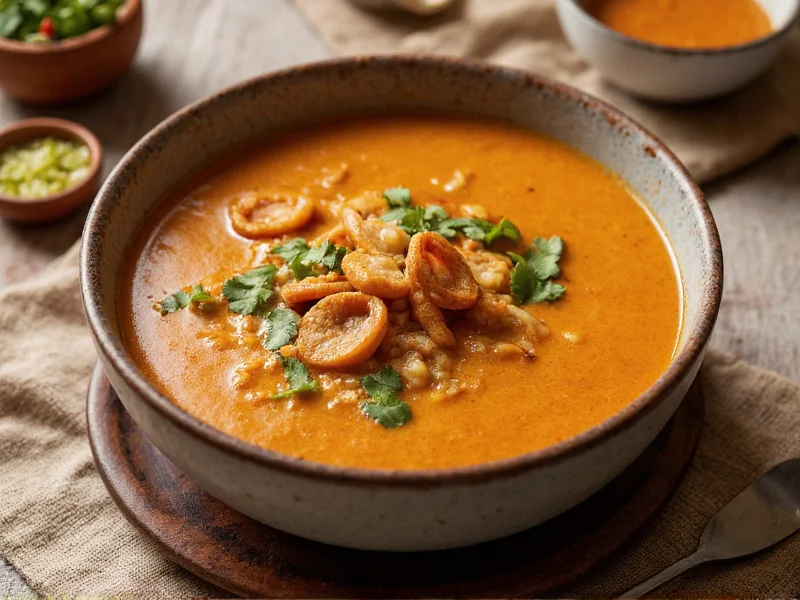Understanding Rao's Soup: Quality Ingredients and Product Range
When shoppers search for "rao's soup," they're typically seeking information about this premium grocery brand's ready-to-serve soup offerings. Rao's Homemade has built its reputation on creating products that mimic the quality of homemade cooking with carefully selected ingredients and traditional recipes.
The Rao's Brand Story and Soup Development
Rao's began as a famous Italian restaurant in New York City's East Harlem neighborhood, established in 1896. The restaurant's popularity led to the creation of Rao's Homemade as a product line, allowing home cooks to experience similar flavors. The soup line emerged as a natural extension of their successful sauce products, maintaining the same commitment to quality.
Rao's Soup Product Line Overview
Rao's offers several soup varieties that have gained popularity in grocery stores nationwide. Their current soup selections typically include:
| Soup Variety | Key Ingredients | Dietary Notes |
|---|---|---|
| Tomato Basil | Tomatoes, olive oil, onions, basil | Gluten-free, no added sugar |
| Minestrone | Tomatoes, beans, vegetables, pasta | Contains gluten (pasta) |
| Chicken Noodle | Chicken broth, carrots, celery, egg noodles | Contains gluten (noodles) |
| Tuscan Bean | Cannellini beans, tomatoes, garlic, olive oil | Gluten-free, vegan |
What Sets Rao's Soup Apart From Competitors
When evaluating "rao's soup vs other brands," several distinctive factors emerge. Unlike many commercial soups that rely on artificial flavors and preservatives, Rao's focuses on simple ingredient lists. Their soups typically contain:
- Extra virgin olive oil instead of cheaper vegetable oils
- Real herbs rather than artificial flavorings
- No high-fructose corn syrup or artificial sweeteners
- No artificial colors or thickeners
- Short ingredient lists with recognizable components
Food enthusiasts searching for "rao's soup ingredients" often appreciate that they can identify and pronounce every component in the product. This transparency has contributed significantly to the brand's loyal following.
Nutritional Profile of Rao's Soups
For health-conscious consumers researching "rao's tomato basil soup nutrition," the brand generally offers better nutritional profiles than many conventional soup brands. A typical serving (about 1 cup) of Rao's tomato-based soups contains approximately:
- 70-100 calories
- 3-5 grams of sugar (naturally occurring)
- 400-600mg sodium (lower than many competitors)
- 2-3 grams of fiber
- No added sugars
Many Rao's soups qualify as gluten-free, making them suitable for those with dietary restrictions. However, customers should always check specific product labels as formulations can change.
Practical Uses for Rao's Soup Products
While Rao's soups work perfectly as standalone meals, culinary enthusiasts often search for creative ways to use these products. Home cooks appreciate "how to use rao's soup in recipes" for:
- As a base for more complex soups and stews
- In pasta dishes to add moisture and flavor
- As a cooking liquid for grains like rice or quinoa
- As a sauce component for braised meats
- As a flavorful alternative to plain broth
The rich flavor profile means Rao's soups often require minimal additional seasoning, making them valuable time-savers in meal preparation without sacrificing quality.
Availability and Purchasing Information
Consumers frequently search for "where to buy rao's soup" as the product has expanded beyond its initial specialty store presence. Today, Rao's soups are widely available at:
- Major grocery chains including Whole Foods, Kroger, and Publix
- Warehouse clubs like Costco (seasonal offerings)
- Online retailers including Amazon and the brand's website
- Specialty food stores and Italian markets
Pricing typically ranges from $3.99 to $5.99 per 18-ounce container, positioning Rao's in the premium segment of the soup market. Many customers consider the higher price justified by the quality ingredients and flavor profile.
Storage and Shelf Life Considerations
For those concerned about "rao's soup shelf life," unopened containers maintain quality for 12-18 months when stored in a cool, dry place. Once opened, refrigeration is required, and the soup should be consumed within 3-5 days. Freezing extends the shelf life to 2-3 months, though texture may change slightly upon thawing.
Consumer Reception and Market Position
Rao's soup line has received positive reception for delivering restaurant-quality flavors in convenient packaging. Food critics and home cooks alike appreciate the brand's commitment to simple ingredients without compromising on taste. While not the most economical option, Rao's occupies a respected position in the premium soup market, appealing to consumers who prioritize ingredient quality and authentic flavors over cost savings.











 浙公网安备
33010002000092号
浙公网安备
33010002000092号 浙B2-20120091-4
浙B2-20120091-4